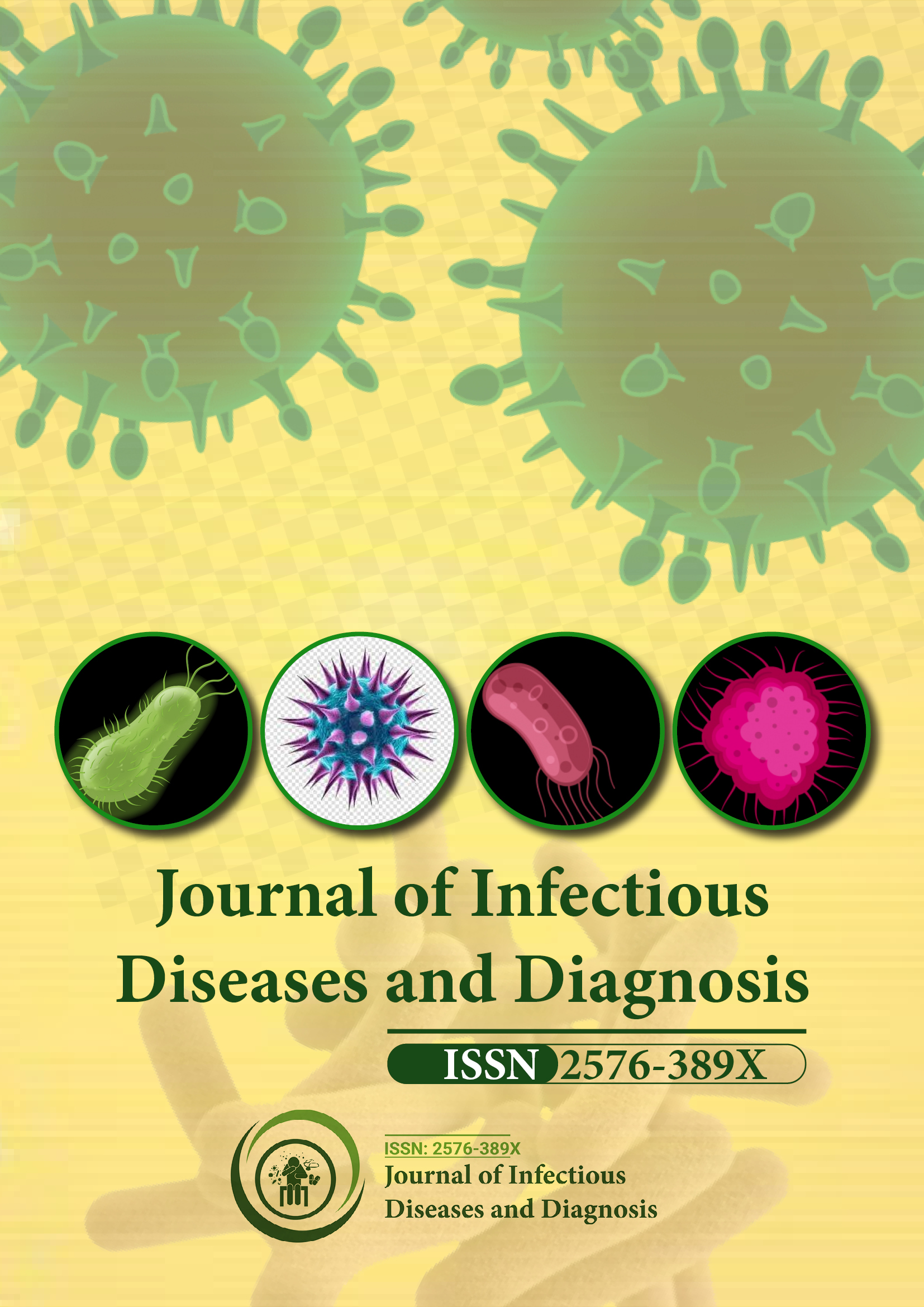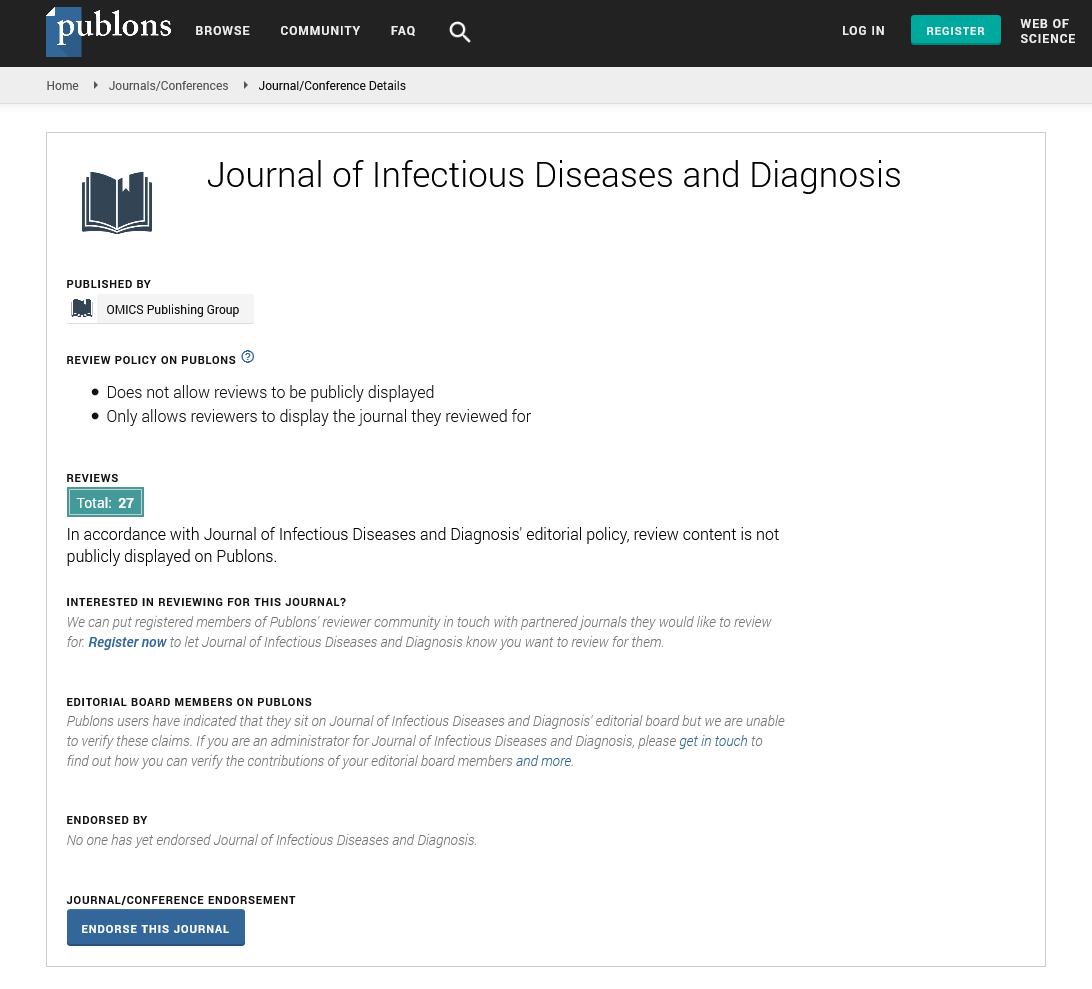Indexed In
- RefSeek
- Hamdard University
- EBSCO A-Z
- Publons
- Euro Pub
- Google Scholar
Useful Links
Share This Page
Journal Flyer

Open Access Journals
- Agri and Aquaculture
- Biochemistry
- Bioinformatics & Systems Biology
- Business & Management
- Chemistry
- Clinical Sciences
- Engineering
- Food & Nutrition
- General Science
- Genetics & Molecular Biology
- Immunology & Microbiology
- Medical Sciences
- Neuroscience & Psychology
- Nursing & Health Care
- Pharmaceutical Sciences
Perspective - (2024) Volume 9, Issue 4
Infection Control Strategies for Home-Based Dialysis Modalities
Naomi Miall*Received: 03-Jun-2024, Manuscript No. JIDD-24-26519; Editor assigned: 05-Jun-2024, Pre QC No. JIDD-24-26519 (PQ); Reviewed: 19-Jun-2024, QC No. JIDD-24-26519; Revised: 26-Jun-2024, Manuscript No. JIDD-24-26519 (R); Published: 03-Jul-2024, DOI: 10.35248/2576-389X.24.09.283
Description
Severe infections pose significant risks for patients undergoing Peritoneal Dialysis (PD) and Home Hemodialysis (HHD), two modalities widely used for managing End-Stage Renal Disease (ESRD). Understanding the factors contributing to these infections, their implications, and strategies for prevention and management is important for improving patient outcomes and quality of life.
Peritoneal dialysis and home hemodialysis offer flexibility and convenience, allowing patients to manage their treatments in the comfort of their homes. However, the home environment, unlike a clinical setting, lacks the sterile conditions necessary to minimize infection risks. Infections remain one of the leading complications associated with these dialysis modalities, often resulting in hospitalization, increased morbidity, and even mortality.
Peritoneal dialysis involves the insertion of a catheter into the peritoneal cavity to facilitate the exchange of fluids that remove waste products from the blood. This catheter, being a foreign object, can serve as a conduit for bacteria, leading to peritonitis, an infection of the peritoneal membrane. Peritonitis is the most common and serious infection associated with PD. It can cause severe abdominal pain, fever, and cloudy dialysis fluid. Recurrent or severe peritonitis can lead to structural damage to the peritoneal membrane, potentially rendering PD ineffective and necessitating a switch to hemodialysis.
Several factors contribute to the high incidence of peritonitis in PD patients. Poor hygiene practices during the exchange process, contamination of dialysis equipment, and improper catheter care are significant risk factors. Additionally, patients with compromised immune systems or other comorbidities, such as diabetes, are at a heightened risk. The presence of biofilms on catheters, which are colonies of bacteria encased in a protective matrix, further complicates treatment as they are resistant to antibiotics and can persist despite aggressive therapy.
Home hemodialysis, while offering greater clearance of toxins and fluid removal, also comes with its own set of infection risks. HHD involves the use of a vascular access point, such as an Arteriovenous (AV) fistula, graft, or Central Venous Catheter (CVC). Central venous catheters, in particular, are associated with a high risk of bloodstream infections. These infections can lead to sepsis, a life-threatening systemic response to infection, which requires immediate medical intervention.
The main factors influencing infection risk in HHD include the type of vascular access used, the frequency and duration of dialysis sessions, and the patient's adherence to aseptic techniques. CVCs are especially prone to infections due to their direct access to the bloodstream and the difficulty in maintaining sterility in a home setting. Frequent handling of the catheter during dialysis sessions increases the risk of contamination.
Preventing severe infections in PD and HHD patients involves a multifaceted approach. Education and training for patients and caregivers on proper techniques and hygiene are fundamental. Ensuring that patients are well-informed about the importance of aseptic procedures can significantly reduce infection rates. Regular follow-up and monitoring by healthcare providers also play a critical role in early detection and management of infections.
In PD, protocols for catheter insertion and maintenance must be meticulously followed. Using prophylactic antibiotics at the time of catheter insertion and employing antimicrobial solutions for exit-site care can reduce the incidence of infections. Additionally, innovations such as flush-before-fill techniques and the use of antiseptic-impregnated catheters have shown promise in reducing peritonitis rates.
For HHD patients, minimizing the use of CVCs by promoting the creation and use of AV fistulas or grafts can lower infection risks. When CVCs are necessary, strict adherence to catheter care protocols, including regular cleaning and dressing changes, is essential. The use of antimicrobial lock solutions can also help prevent catheter-related bloodstream infections.
Moreover, the development of home monitoring systems and telehealth services can enhance the management of dialysis patients. These technologies allow healthcare providers to remotely monitor patients' adherence to protocols, detect early signs of infection, and provide timely interventions. Telehealth services also facilitate continuous education and support for patients, reinforcing best practices and addressing any concerns promptly.
Research into novel materials and technologies for dialysis equipment is ongoing, aiming to further reduce infection risks. For example, developing catheter materials that resist biofilm formation and incorporating antimicrobial properties into dialysis systems can provide additional layers of protection against infections.
Conclusion
In conclusion, severe infections in peritoneal dialysis and home hemodialysis patients remain a significant challenge, necessitating a comprehensive approach to prevention and management. Through patient education, strict adherence to aseptic techniques, regular monitoring, and ongoing research into innovative solutions, the risks associated with these infections can be mitigated, ultimately improving patient outcomes and quality of life.
Citation: Miall N (2024) Infection Control Strategies for Home-Based Dialysis Modalities. J Infect Dis Diagn. 9:283.
Copyright: © 2024 Miall N. This is an open-access article distributed under the terms of the Creative Commons Attribution License, which permits unrestricted use, distribution, and reproduction in any medium, provided the original author and source are credited.

